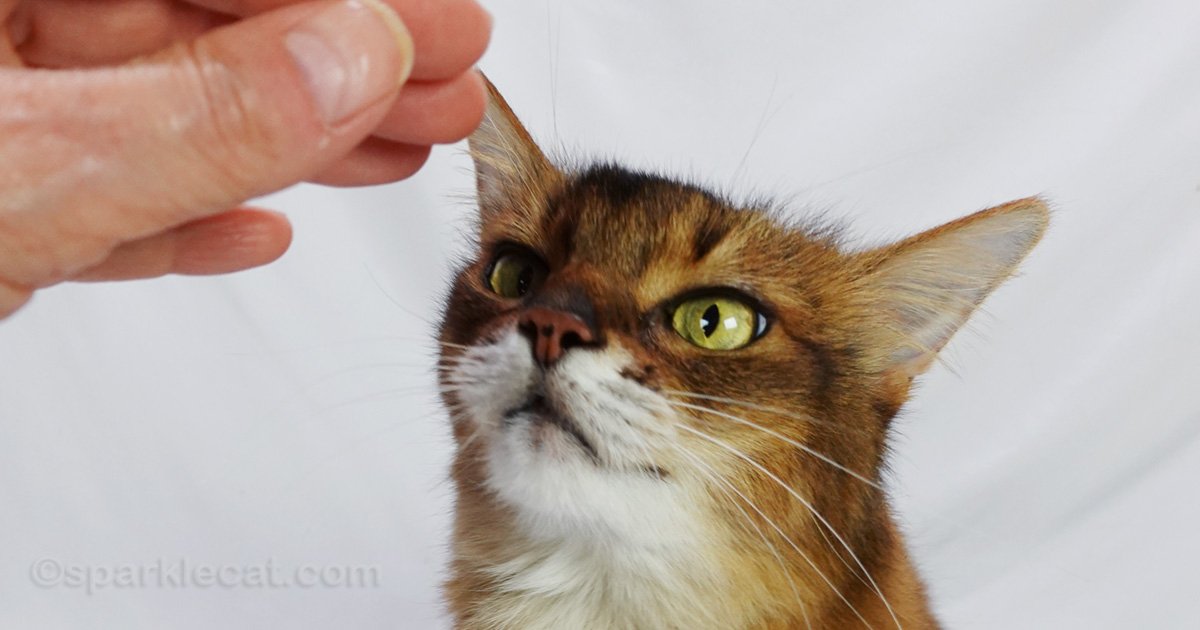So you love cats and you’ve had them all your life, but when you visit a friend with a cat, they don’t come near you. Meanwhile, someone you know who doesn’t really like cats at all — hates them, in fact — is like a kitty magnet. The moment they enter a room and sit down, the resident feline becomes their new best friend.
Not only is it not fair, there is actual truth — and proof! — to cats preferring people who dislike them. But don’t worry. There’s a workaround for all the cat lovers out there who want more kitty attention.
Studying Cat and Human Interaction



A 2022 UK study published in Nature.com looked at how cats responded to different individuals. 100 adoptable, neutered cats were used in the study, and 119 adults between the ages of 18 and 75 participated.
Here’s how the study worked. Each cat spent time in one of several rooms at a shelter where they had everything to make them comfortable, including a place to hide if they wanted. A chair for the person was placed near the door, and not close to the cat’s creature comforts. The room was fitted with two GoPro cameras for observation. The person was instructed to sit in the chair and remain there. Other than that, they could interact with the cats any way they wanted, except for picking them up.
Most cats had three 5-minute sessions with different people. A few had more, but all the sessions were spaced far enough apart for the cat’s comfort. The researchers measured for how much the people solicited the cat’s attention, and where they touched or petted the cat, and for how long. Then they tallied the results and divided them up with different demographics, including experience with cats, how many they’ve owned, and a self-assessment on how much they knew about cats.
What They Discovered



The results were surprising. Well, surprising if you are a cat lover. Not surprising to me, or to any other cat. The people who claimed the most experience with cats were more likely to vie for the test cats’ attention and touch them in areas that were considered “red” or do-not-touch zones, such as the base of the tail or tummy. Some of the older participants were particularly guilty of breaking the rule about not picking up the cat. So of course the cats were less inclined to be friendly with them.
Meanwhile, the people with the least feline experience had the happiest interactions with the cats. They let the cat approach them at will, usually only touched or petted the safest areas — the cheeks, base of the ears, and under the chin. The cats naturally gravitated to them.
The Predator-Prey Connection and Making Feline Friends
Since cats are both predator and prey in the wild, they don’t make friends right away. They need to make sure you aren’t going to harm them. So any aggressive behavior, even if it is well-meaning, won’t fly with a cat who doesn’t know you. Cats like being in control, and they want to be able to escape if they find themselves in a situation that worries or displeases them.
People who have been around cats all their lives often forget this. Their own cats feel safe enough with them to allow all sorts of behavior that would put them in danger if they were living outside. And because they’ve had so much experience with cats, they forget that a new cat is meeting them for the first time and doesn’t know their background. Trust is earned if you are a kitty.
People who aren’t around cats much tend to hold back and not approach them right away (I’ve discovered this myself as a therapy cat). This gives the cat time to assess them. And because they are letting the cat take the lead, the cat does. It’s as simple as that.
The Exception to the Rule
The one type of exception in this study involved people who work with cats and other animals. Because their background is probably more educated than the average cat owner, they were more likely to behave in ways that let the cat take the lead. Which hints that no matter how many cats have been in your life, there is always something new to learn.
An Interesting Conclusion
One thing this study pointed out was that while rescues and shelters favor adopters who have more longterm experience with cats, they shouldn’t rule out those with little or no experience. It should be more important that someone is willing to learn how to properly care for a cat and make them a family member. The lack of experience at the beginning of the relationship may actually be helpful for someone who sincerely wants to understand their new friend.
You can read the whole study here: https://www.nature.com/articles/s41598-022-15194-7
Where I’m Different
Funny enough, I’m the opposite of most cats. I’m so used to people handling me without my permission, or touching parts of me most cats wouldn’t like or tolerate, that even a cat-crazy person doesn’t phase me. Well, as long as they don’t try to pick me up. I’ll squirm, although I won’t be mean about it. People who try the usual feline protocol with me — slow approaches, hand out, etc. — confuse me. I sort of expect people to be all over the place!
I do confess, though, sometimes I have a secret fondness for people who ignore me! Those people often get extra love from me. So maybe I’m not unlike your average cat after all.
Want to know more about improving cat-human relationships? Here you go:


